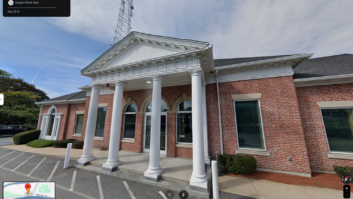That Was Then: W1XOJ Boston
Nov 1, 2011 1:00 AM, By Erin Shipps, senior associate editor
On Aug. 18, 1937, the FCC issued the first FM construction permit to W1XOJ, Boston. The station signed on in 1941 as WGTR.
Dan Kelleher is the chief engineer for WSRS 96.1 FM, located on Little Asnebumskit in Paxton, MA, about 1,800′ from where W1XOJ was sited. He writes, “W1XOJ at one time had a CP for 300kW on 42MHz. They expected to have a ‘city grade’ contour covering all of New England past Augusta, ME, beyond New York City to the edge of Philly and west covering Albany and Utica, NY. They never were able to make that much RF but attempted to by installing 10 transmitters and antennas. I do not know what maximum ERP was ever achieved. Edwin H. Armstrong picked this hill and speced the tower and equipment, which was built by REL and paid for by John Shepard.
“It must have been quite a challenge given the technology. The Mass State Police still keeps its 41.5MHz analog FM system in place from Mt. Wachussett. I’m told that is the only signal that reaches into all the valleys of the Berkshires at the western end of the state. And it’s 300W ERP.

Maj. Edwin H. Armstrong, Columbia University professor and pioneer inventor of the superheterodyne circuit, and Paul DeMars, the chief for Yankee Network, in front of W1XOJ’s transmitter control panel.
“The IEEE is looking into the FM relay network as a Milestone Project that should be recognized as a significant technical achievement. The only other Milestone Projects in Massachusetts are the Brant Rock broadcast of Fessenden and the Boston subway system’s electric motor and associated distribution system. But they are frustrated with the lack of and conflicting information available.”

Hear a February 1941 audio recording between Armstrong in NY, relayed to Alpine, NJ, Meriden, CT, Paxton and Boston, MA, and Mt. Washington. They talk about S/N ratio, keeping the new diesel generators going, the weather on Mt. Washington and the idea of broadcasting the sound of 200mph winds. You can clearly hear that Armstrong was connected via a telco line, the others are all off air FM.
Sample and Hold: Mobile Local Ad Revenues to Grow
Among the drivers of mobile ad revenue growth are smartphone penetration, mobile Web usage and related increases in ad inventory….
November 2011
A look at prefabricated shelters, inside the studios of Merlin Media Chicago, Field Reports on Adobe Audition 5.5 and the Olympus DM-620 and more….











